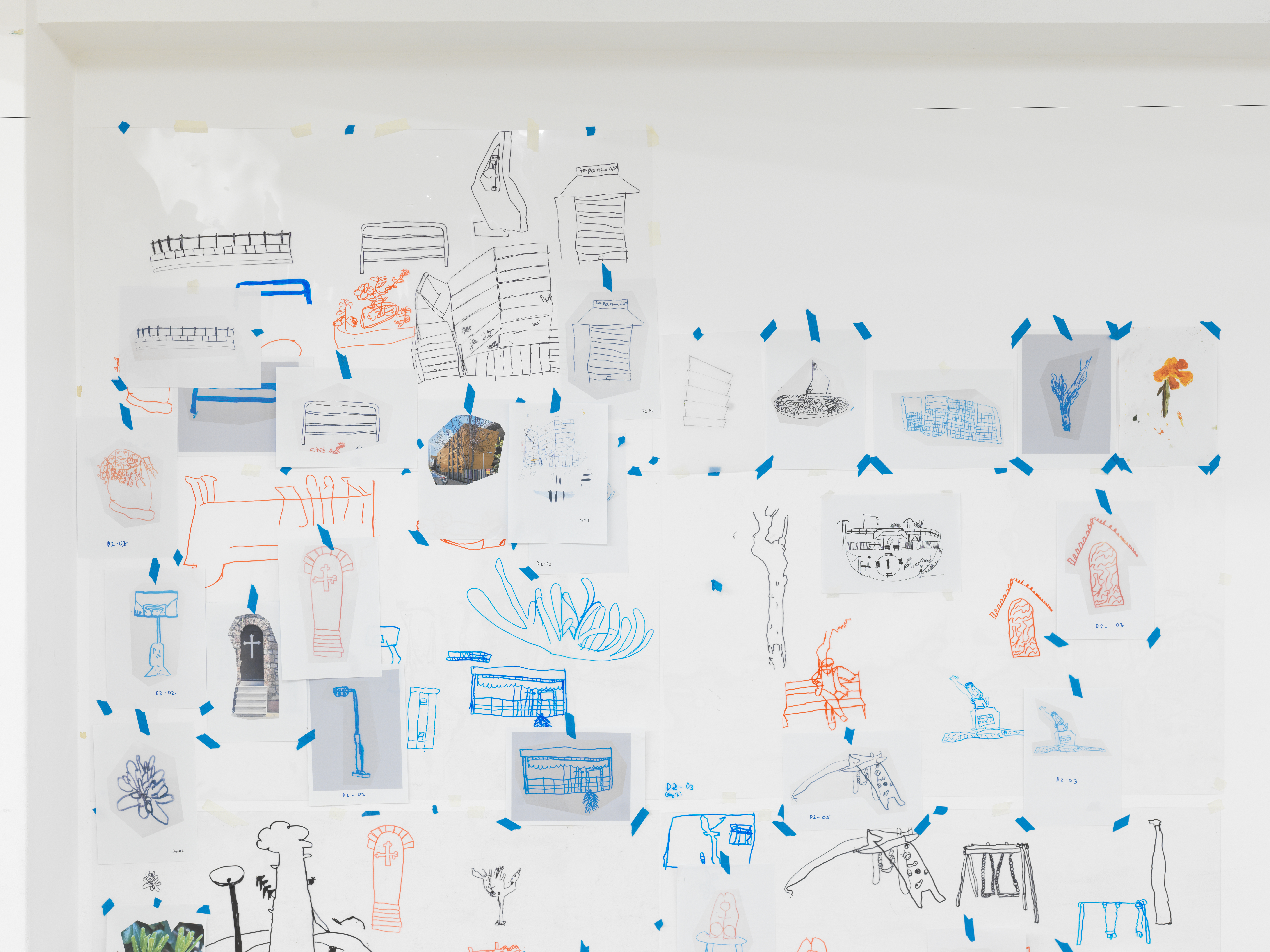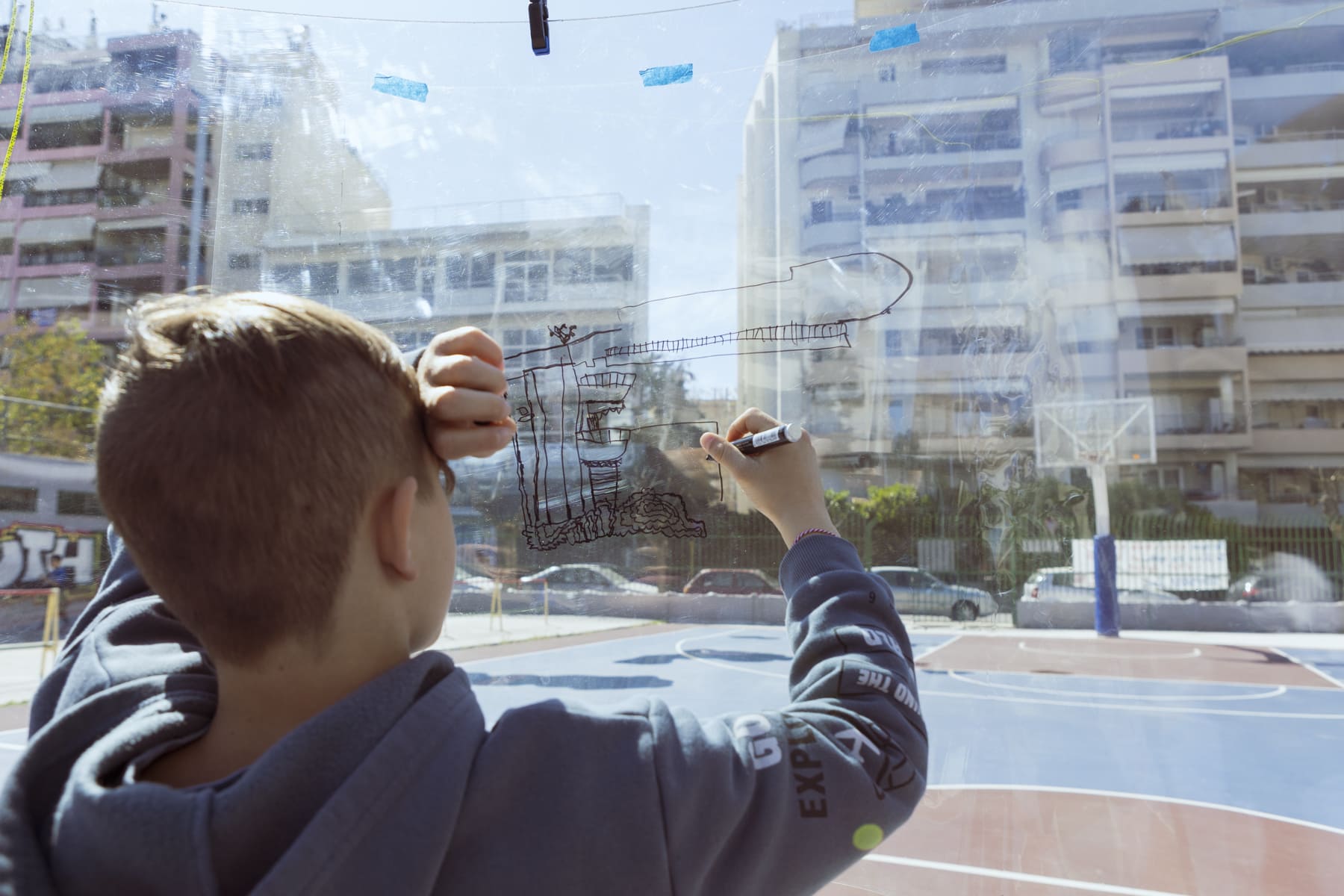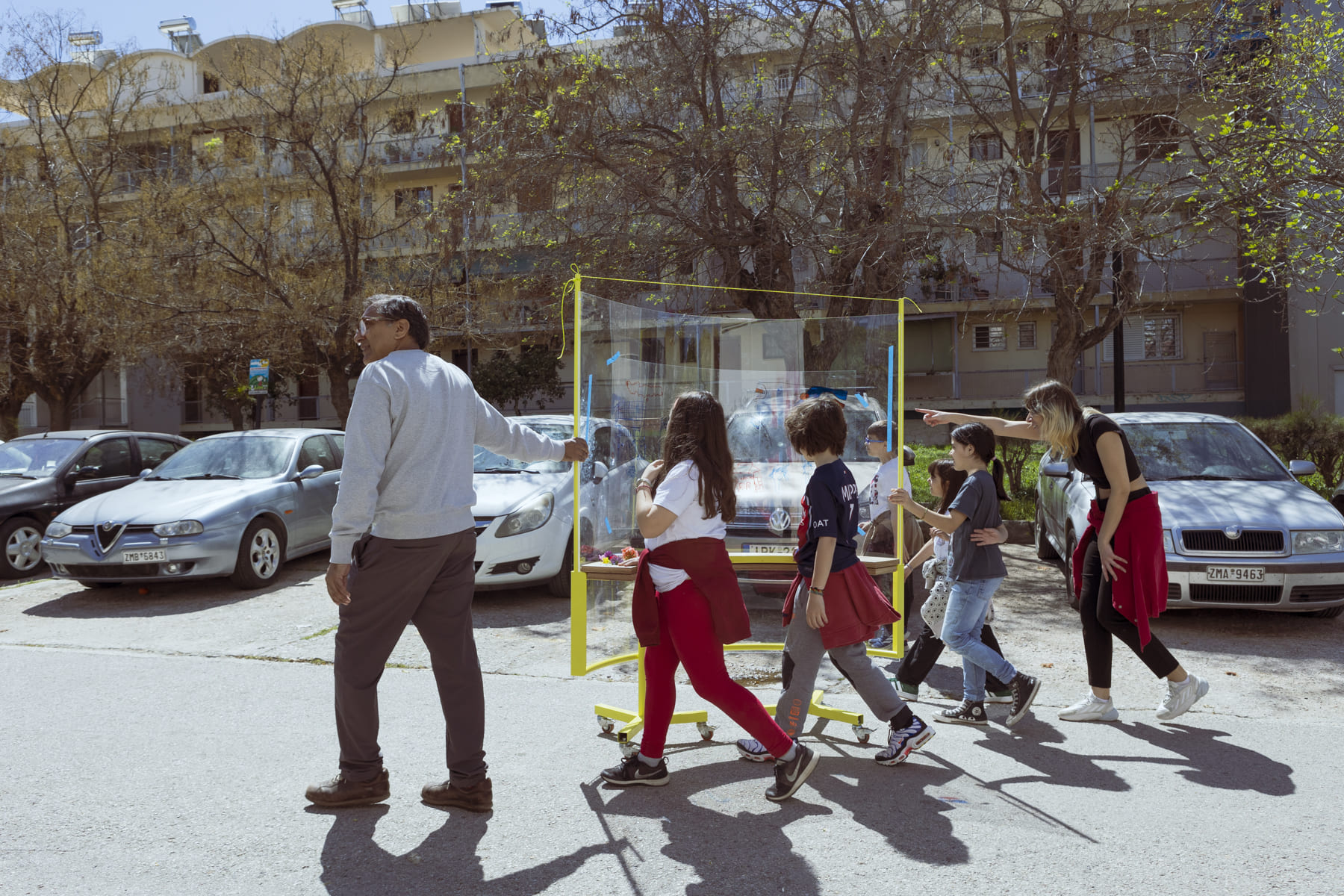a thousand and one stories

Workshop dates
Exhibition opening
Duration
Artist
Curation
Assistant curator and coordination
Artist assistants
Communications
Collaboration
Drawing machine concept and prototypes
Drawing machine production
Woodwork: Dimitris & Giorgos Dovelos
Polycarbonate surfaces: Kanakis Plexy Glass
A Thousand And One Stories has at its heart the belief that the practice of drawing prioritises multiplicity.
Inspired by Soi’s exploration of the Panorama Mesdag in the Hague, this prototype of the Drawing Machine[1], first conceptualised in 2003, was designed for him by A Whales Architect and produced in Athens. Over the course of a 3 week workshop a diverse age-group of students, guided by Soi, used the machines to generate drawings in plein-air of the Tavros neighbourhood in which they were based.
The sensitivity for drawing exists in every one of us. The Drawing Machines were conceptualised to activate this instinct. Enclosed within the curvilinear sweep of the machines transparent polycarbonate screen, the user looks out into the landscape and traces what they see on acetate sheets taped to the screen. The shifts in perspective brought on by the slightest movement results in the generation of a subjective line. Hierarchies are broken down. The user learns to trust their hand and the fear to make a perfect drawing is eliminated.
These drawings were digitised and projected onto two large curvilinear walls—structures characteristic of Soi’s installations. Together, students positioned and traced out the imagery in pencil. Soi shared with the students his methods that include heightened shifts in colour, scale and the fragmentation of imagery and guided them in translating their drawings into paintings. A portrait of Tavros emerged. The resulting compositions reflect not only the multiple resolutions painting offers, but also the multiple viewpoints that richly intertwined perspectives bring.
Interactive installations like the TAVROS workshop/exhibition are central to Soi’s commitment to fostering tactile, material-based learning environments. It engaged a younger generation accustomed to digital tools. A forthcoming publication will outline an experimental pedagogical approach to drawing.
One Thousand and One Stories has been a deeply collaborative process from the start. Conversations between Soi and the curatorial team of TAVROS began more than 3 years ago and expanded to include architects, carpenters, metalworkers, school-teachers and their students. The collaborations with schools and NGO’s (2nd primary school of Tavros, the 5th high school of Kallithea the NGO METAdrasi) were integral for the project.
Through this open-ended, collaborative and process driven programme, TAVROS, is building on a long history of thinking critically about the role cultural practices play in educational systems. It is continuing its curiosity in experimenting with curatorial forms, experimental pedagogies, as well as its commitment to promoting working on a long-term basis with artists as well as local communities. Lastly, it reflects an interest in constantly questioning and expanding the possibilities of what an independent arts space in Athens can offer to the communities it is involved with.
[1] The Drawing Machine was inspired by Soi’s research of the Panorama Mesdag in The Hague. Its author, Hendrik Willem Mesdag (1831-1915), used a glass cylinder to rapidly sketch a wrap-around view of the beach at Scheveningen as a guide for the final panorama that was painted with the building specifically designed to house it. This machine is the second prototype. The first, was built in 2003 in the Rijksakademie in Amsterdam.
Parallel events
Saturday, 5 April 2025, 16:00 – 17:00 | Discussion
with Praneet Soi, Iris Lykourioti, Maria-Thalia Carras
Support
Mondriaan Fund, John S Fafalios Foundation



